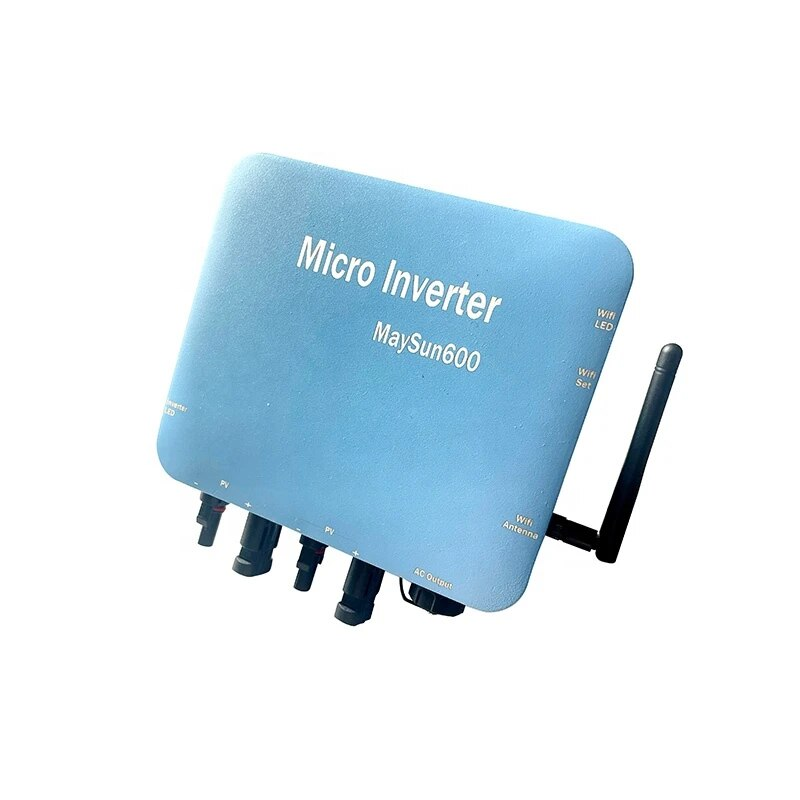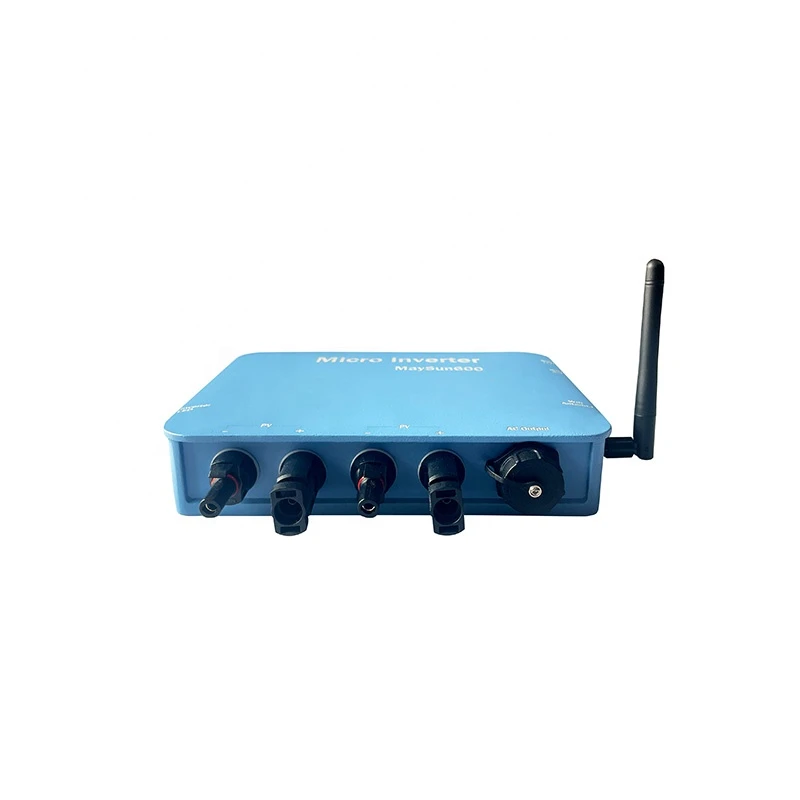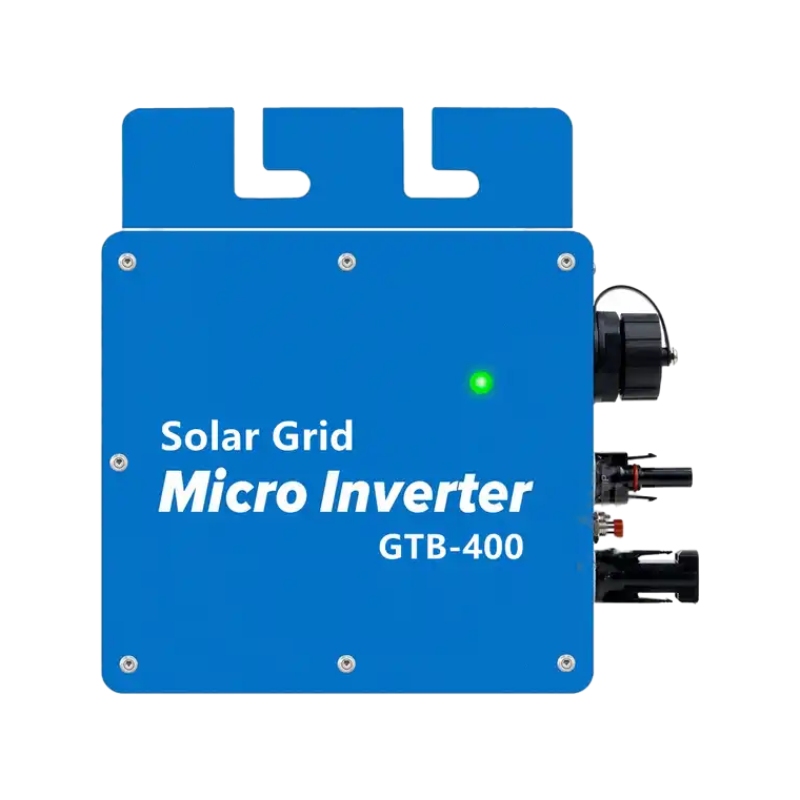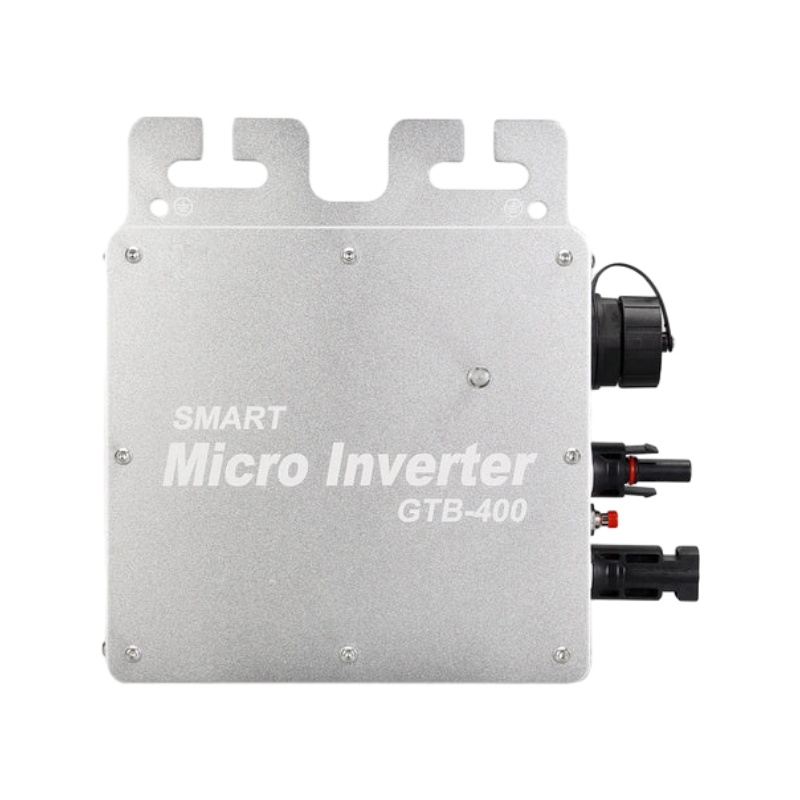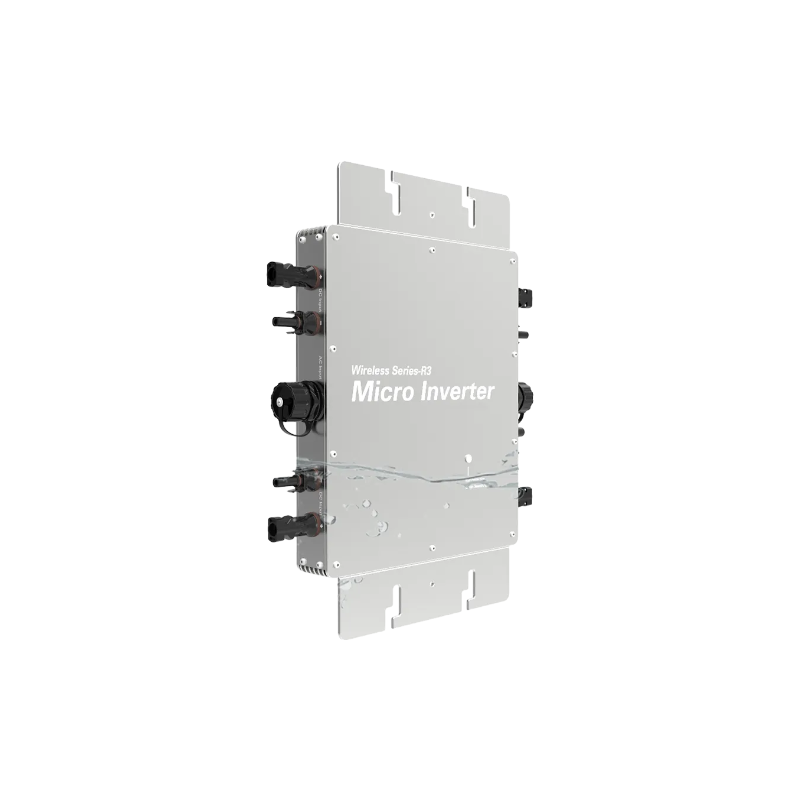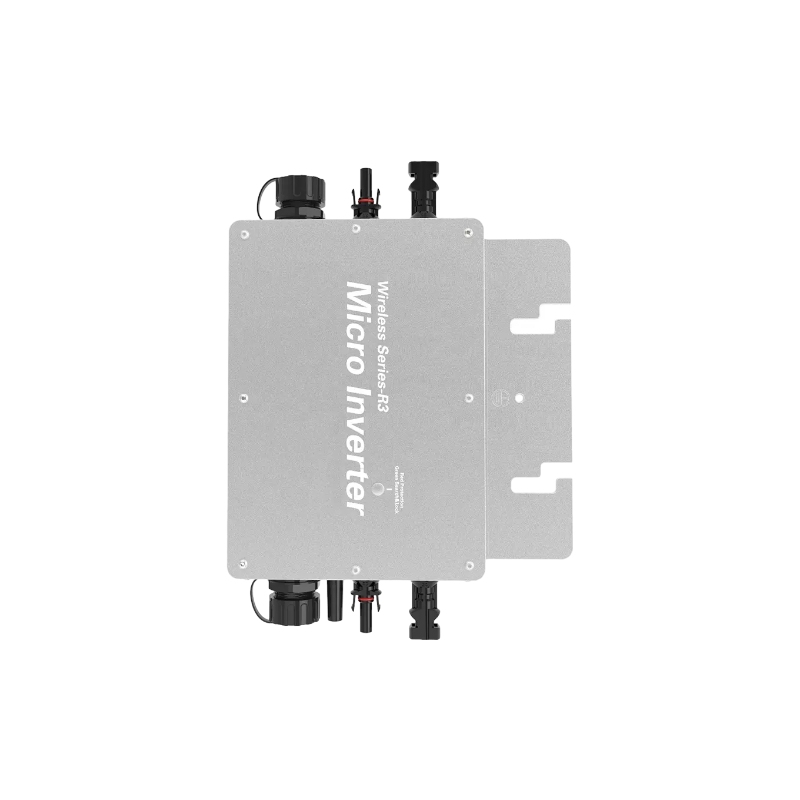Features of PV Micro Inverter MaySun 600W -1000W
- Series model: MaySun 600W -1000W
- Power: 600W-1000W
- Input voltage: 22-60V
- Output voltage: 90-140V/180-260V
- AC frequency: Auto
- Communication: WIFI
- Certificate: CE/ROHS/REACH
- Unit size: 23cm x 21.5cm x 4cm
- Unit weight: 1.22kg
- Box size: 25.8cm x 23.8cm x 10.1cm
- Box G.W: 1.86kg
- Carton size: 54cm x 25.5cm x 28cm
- Carton G.W: 9.9kg(5pcs)
Communication Mode of Solar PV Micro Inverter
- CO-2-induced environmental analysis
- Daily and total energy generation in kWh
- Actual DC input voltage, current, and power
- Actual AC output voltage, current, and power
- Inverter temperature
- Online switch for the inverter start stop
- Historical (daily, weekly, monthly) power curve
Specification of PV Micro Inverter MaySun 600W -1000W
| Model | MaySun600 | MaySun700 | MaySun800 | MaySun900 | MaySun1000 | |
| Input Data(DC,PV) | ||||||
| Number of Input MC4 Connector | 2sets | |||||
| MPPT Voltage Range | 28V-55V | |||||
| Operation Voltage Range | 20V-60V | |||||
| Maximum Input Voltage | 60V | |||||
| Startup Voltage | 20V | |||||
| Maximum Input Current | 2*10A | 2* 11.66A | 2*13.33A | 2* 15.33A | 2* 16.66A | |
| Output Data(AC) | ||||||
| Single-Phase Grid Type | 120V / 230V | |||||
| Rated Output Power | 580W | 650W | 760W | 850W | 950W | |
| Maximum Output Power | 600W | 700W | 800W | 900W | 1000W | |
| Nominal Output Current | @120VAC | 4.83A | 5.41A | 6.33A | 7.08A | 7.91A |
| @230VAC | 2.52A | 2.82A | 3.3A | 3.69A | 4.13A | |
| Nominal Output Voltage | 120VAC / 230VAC | |||||
| Default Output Voltage Range | @120VAC : 80V-160V / @230VAC : 180V-280V | |||||
| Nominal Output Frequency | 50Hz / 60Hz | |||||
| Default Output Frequency Range | @50Hz : 47.5Hz-52.5Hz / @60Hz : 57.5Hz-62.5Hz | |||||
| Power Factor | >0.99 | |||||
| Total Harmonic Distortion | THD <5% | |||||
| Efficiency | ||||||
| Peak Efficiency | 95% | |||||
| CEC Weighted Efficiency | @120VAC : 92.5% / @230VAC : 93.5% | |||||
| Nominal MPPT Efficiency | 99.90% | |||||
| Night Power Consumption | <700mW | |||||
| Mechanical Data | ||||||
| Operating Ambient Temperature Range | -40°C to +65°C | |||||
| Storage Temperature Range | -40°C to +85°C | |||||
| Dimensions (W x H x D) | 21.5cm x 23cm x 4cm | |||||
| Weight | 1.22kg | |||||
| Max Current of AC Bus Cable | 20A | |||||
| Waterproof Grade | IP65 | |||||
| Cooling Mode | Natural Convection – No Fan | |||||
| Other Features | ||||||
| Communication | WIFI With Cloud Monitoring | |||||
| Transformer Design | High-Frequency Transformers, Galvanically Isolated | |||||
| Integrated Ground | Equipment ground is provided by the PE in the AC cable. No additional ground is required. | |||||
| Protection Functions | Isolated Island Protection, Voltage Protection, Frequency Protection, Temperature | |||||
| Design Compliance | CE etc. | |||||
Applications
PV micro inverters in the 600W to 1000W range find various applications in solar energy systems, particularly in residential and small-scale installations. Here are some common applications:
- Residential Solar Systems: PV micro inverters are often used in residential solar installations where the power output of individual panels needs to be optimized. They are ideal for rooftops or small spaces where shading or panel orientation may vary.
- Small Commercial Systems: Businesses with relatively small rooftop spaces or limited installation areas can benefit from micro inverters. These systems are scalable and allow for easy expansion if energy needs increase over time.
- Off-Grid Solar Systems: In off-grid applications, where the solar array is the primary source of power, micro inverters can be used to convert DC power generated by solar panels into AC power for use in homes, cabins, or remote locations.
- Backup Power Systems: PV micro inverters can be integrated into backup power systems, providing an alternative power source during grid outages. This is particularly useful for critical loads or essential appliances.
- Educational and Demonstration Projects: Micro inverters are often employed in educational settings or demonstration projects to showcase solar energy concepts. Their individual panel optimization and monitoring features make them a valuable tool for educational purposes.
- Hybrid Systems: In hybrid solar systems that combine solar power with other energy sources (e.g., batteries or generators), microinverters can play a role in managing and optimizing the solar contribution to the overall energy mix.
- Remote Monitoring: The monitoring capabilities of micro inverters make them suitable for applications where remote monitoring and maintenance are essential. This is particularly beneficial for large-scale solar installations.
- Modular Installations: Micro inverters offer flexibility in system design, allowing for modular installations where panels can be added or replaced independently without affecting the entire system’s performance.
Overall, the versatility, efficiency, and monitoring features of PV micro inverters make them a practical choice for a range of applications in both residential and small commercial solar energy systems.


